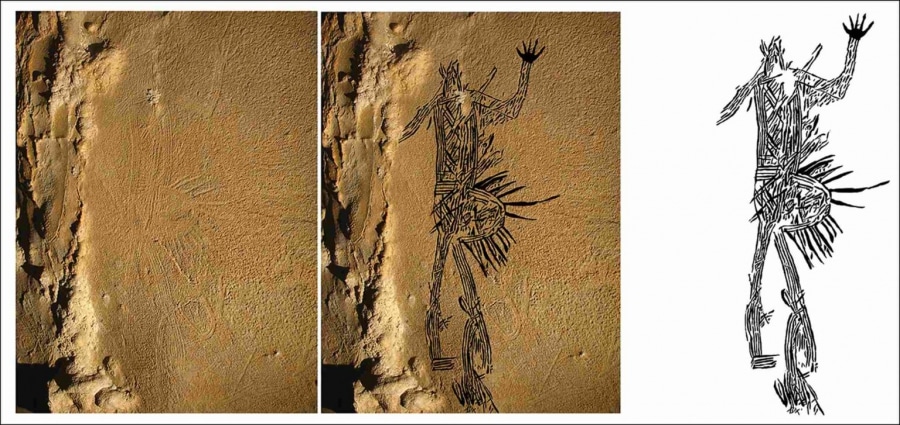The cave where the images were found, unlike anything known so far, was discovered by scientists long ago. But only now has it become possible to “see” its richly decorated ceiling – with the help of not very archaeological equipment. In 1998, in Alabama, archaeologists discovered a cave with several fragments of pottery, as well as coal suitable for radiocarbon dating. The pottery turns out to be similar to specimens from the Woodland period (from around 1000 BC to 1000 AD). Radiocarbon analysis gives two dates for two groups of specimens: it turns out that the cave was guaranteed to be visited in 133-433 and 660-949 AD. A group of scientists led by Jan Simek from the University of Tennessee (USA) studied the ceiling of this cave: it must be said that it is very low – from 60 centimeters to 1.25 meters. The results are presented in an article published in the journal Antiquity. Cave 19 in Alabama itself (archeological sites are sometimes given numbers instead of proper names to keep their location secret) is huge. It has both vertical galleries, typical of karst caves, and galleries with low ceilings. On the ceiling of just such a gallery with an area of 20 by 25 meters, scientists have discovered the largest North American rock paintings known today. So far, they have not been paid attention to, because they are difficult to distinguish: for this you have to lie on the floor. Simek applied the method of photogrammetry, which has long been known and widely used for applied purposes, but not in archeology. Shortly before the drawings were made, a thin layer of clay formed on the ceiling of the cave – probably a remnant of a large muddy stream. It is in this layer that the drawings are located. It is now difficult to say whether the ancient artists used any tools or painted with their fingertips. The specific microclimate of the cave not only provides a “canvas” for the rock paintings, but also preserves them: the clay layer is preserved by oxidation caused by condensation of moisture.
What did the people of pre-Columbian America draw?
Humans and animals. On the ceiling, the image of a rattlesnake about three meters long is completely distinguishable – it is believed to have been a sacred animal among a number of indigenous peoples of the southeastern part of the modern United States. Scientists have described the five largest drawings. In addition to the rattlesnake on the ceiling there are human figures and intricate patterns. Two of the anthropomorphic figures are slightly longer than 1.8 meters, the other is slightly longer than 90 centimeters. These people seem to be dressed in ceremonial clothes and perform some kind of ritual.
Researchers suggest that some of the anthropomorphic figures depict ghosts rather than people, and the whole complex of drawings is dedicated to the spirit world. It is not yet possible to test this hypothesis. Simek believes that the use of photogrammetry to study caves with traces of human habitation will make it possible to find more similar drawings. And then it will be possible to talk about a system of ideas, and not about the work of one person (or group of artists).
Simek’s hypothesis about the object of the image (the afterlife) is supported by the place chosen for the drawings. The gallery in which they were found is located in the dark area of the cave, that is, the sunlight does not reach that far. Ancient artists painted their paintings in the light of torches made from arundinaria (or American bamboo). In fact, according to the remains of the torch, one of the dates for visiting the cave has been set. In addition, virtually all peoples of pre-Columbian North America (and those living in the modern United States and Mesoamerica) considered the caves a passage to the realm of the dead. The late Woodland period, to which the drawings seem to belong, is characterized by the fact that the population of eastern North America is beginning to spread over more and more areas, although it is not increasing in number. This led to the isolation of tribes that had previously maintained cultural and commercial ties. As a result, some elements of the material culture of different peoples proved to be completely unique: for example, some managed without bows and arrows, although the proliferation of these weapons was extremely wide. The extent to which such peoples have been able to preserve common cultural and religious ideas is a matter for future research.
Photo: Jan Simek et al.












